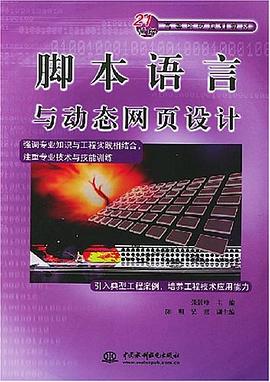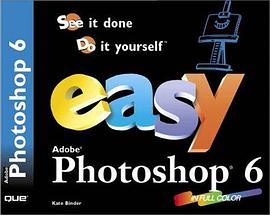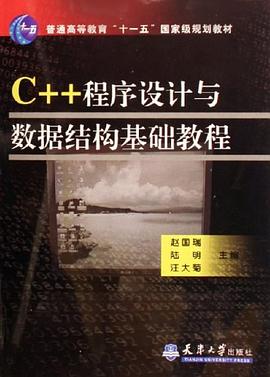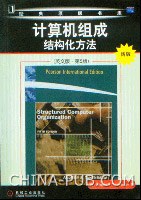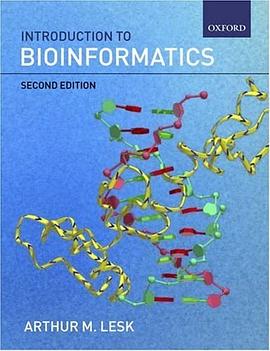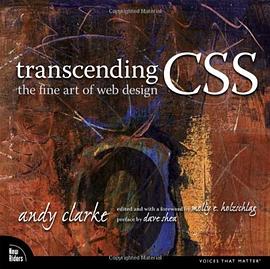
Practical Computer-aided Lens Design
By Gregory Hallock Smith
Published by Willmann-Bell, 1998
ISBN 0943396573, 9780943396576
427 pages
Table of Contents:
Preface
Part A Optical Concepts and Techniques
A.1 Introduction
A.2 A Brief History of Lens Design
A.2.1 Two Approaches to Optical Design
A.2.2 Analytical Design Methods
A.2.3 Numerical Evaluation Methods
A.2.4 Optical Design Using Computer-Aided Numerical Optimization
A.3 Light and Imaging Systems
A.3.1 The Nature of Light
A.3.2 Spectral Regions
A.3.3 Objects, Light Rays, and Wavefronts
A.3.4 Images and Imaging Systems
A.3.5 The Optical Axis
A.3.6 Stops and Pupils
A.3.7 Marginal and Chief Rays
A.3.8 Perfect Imagery
A.3.9 Causes of Image Quality Degradation
A.3.10 The Point Spread Function
A.3.11 Image Motion
A.3.12 Stray Light
A.3.13 Focal and Afocal Systems
A.3.14 Fast and Slow Lenses and Detectors
A.3.15 Coordinate Systems and Sign Conventions
A.3.16 Optical Prescriptions
A.3.17 Aspheric Surfaces
A.3.18 Thin Lenses
A.3.19 The Pinhole Camera Example
A.4 First-Order, Paraxial, and Gaussian Optics
A.4.1 Snell's Law to First Order
A.4.2 Paraxial Optics
A.4.3 Usefulness of Paraxial Optics
A.4.4 Principal Planes and Cardinal Points
A.4.5 Collinear Mapping and Gaussian Optics
A.4.6 Where First-Order Optics Do Not Work
A.4.7 Paraxial Properties of Surfaces
A.5 First-Order Ray Tracing
A.5.1 Recursion Formulas for Surfaces
A.5.2 Transfer Equation
A.5.3 Refraction Equation
A.5.4 Recursion Formulas for Thin Lenses
A.5.5 Reduced Thickness
A.5.6 The Lagrange Invariant
A.5.7 Physical Significance of the Lagrange Invariant
A.5.8 First-Order Ray Trace Used to Design a Projector
A.6 Basic Optical Analysis
A.6.1 Gaussian and True Entrance Pupils
A.6.2 Effective Refracting Surface
A.6.3 Zones
A.6.4 Bending a Lens
A.6.5 Tangential and Sagittal Planes
A.6.6 Back Focal Length and Effective Focal Length
A.6.7 Telephoto and Retrofocus Lenses
A.6.8 BFL, EFL, and Aberrations
A.6.9 Sign Conventions for Aberrations
A.6.10 Three Basic Analytical Tools
A.6.11 Layout
A.6.12 Spot Diagram
A.6.13 Filling the Lens with Rays
A.6.14 Transverse Ray-Intercept Ray Fan Plot
A.6.15 Example of a Ray Fan Plot
A.6.16 Use of Ray Fan Plots
A.7 On-Axis Geometrical Aberrations
A.7.1 Plane Surfaces
A.7.2 Correcting Versus Controlling Aberrations
A.7.3 Undercorrected Spherical Aberration at Paraxial Focus
A.7.4 Undercorrected Spherical Aberration at Best Focus
A.7.5 Overcorrected Spherical Aberration at Paraxial Focus
A.7.6 Third-Order Spherical Aberration Controlled at Paraxial Focus
A.7.7 Third-Order Spherical Aberration Controlled at Best Focus
A.7.8 Third- and Fifth-Order Spherical Aberration Controlled at Paraxial Focus
A.7.9 Third- and Fifth-Order Spherical Aberration Controlled at Best Focus
A.7.10 A Perfect Monochromatic On-Axis Lens
A.7.11 A Defocused Perfect Lens
A.7.12 Balancing Aberrations in Multi-Element Lenses
A.7.13 Longitudinal Chromatic Aberration
A.7.14 Other Chromatic Aberrations
A.7.15 Defocus with an On-Axis Paraboloidal Mirror
A.8 Off-Axis Geometrical Aberrations
A.8.1 Lateral Chromatic Aberration
A.8.2 Field Curvature
A.8.3 Coma
A.8.4 Astigmatism and Field Curvature
A.8.5 Distortion
A.8.6 Higher-Order Off-Axis Aberrations
A.9 Analytical Relationships for Imagery
A.9.1 Petzval Surface and Petzval Sum
A.9.2 Aberration Dependence on Aperture and Field
A.9.3 Use of Symmetry in Controlling Transverse Aberrations
A.9.4 Effect of a Stop Shift
A.9.5 Vignetting and the Cosine-Fourth Law
A.10 Optical Glass
A.10.1 Index of Refraction
A.10.2 Dispersion
A.10.3 Crown and Flint Glasses
A.10.4 Partial Dispersion
A.10.5 Glass Maps
A.10.6 Ultraviolet and Infrared Glasses
A.10.7 Glass Selection
A.10.8 Melt Sheets
A.10.9 Non-Optical Glass Considerations
A.10.10 Glass Manufacturers
A.10.11 Mirror Substrate Materials
A.11 Wavefronts and Diffraction
A.11.1 Diffraction by Aperture Edges
A.11.2 Geometrical Wavefronts
A.11.3 Aberrations Measured by Optical Path Differences
A.11.4 Specifying the Amount of OPD Aberrations
A.11.5 OPD Ray Fan Plots
A.11.6 The Diffraction-Limited PSF
A.11.7 Diffraction Plus Aberrations
A.11.8 OPD Plots for Chromatic Aberrations
A.11.9 Full Width at Half Power
A.11.10 Diffraction-Limited Resolution
A.11.11 Strehl Ratio and the Quarter-Wave Rule
A.11.12 Scaling the Lens
A.11.13 The Lyot Stop
A.11.14 A Lyot Stop Plus a Field Lens
A.12 Modulation Transfer Function
A.12.1 Frequency Response
A.12.2 Fourier Analysis
A.12.3 Measuring MTF
A.12.4 Calculating the Diffraction MTF by Autocorrelation
A.12.5 Calculating the Diffraction MTF by Fourier Transforms
A.12.6 Consequences for Optical Design
A.12.7 MTF in the Presence of Aberrations
A.12.8 Minimum Detectable Modulation and Limiting Resolving Power
A.12.9 Spurious Resolution
A.12.10 Nyquist Frequency
A.13 The Merit Function
A.13.1 The Merit Function as a Measure of Optical Performance
A.13.2 The Constituents of the Merit Function
A.13.3 Optimization Operands and Damped Least-Squares
A.13.4 Weighting Operands and Lagrange Multipliers
A.13.5 Weighting Fields and Wavelengths
A.13.6 Built-in Operands and Default Merit Functions
A.13.7 Optimizing with RMS Spot Size
A.13.8 Optimizing with OPD Errors
A.13.9 Optimizing with Modulation Transfer Function
A.13.10 Optimizing with User-Selected and User-Defined Operands
A.13.11 Examples of User-Selected and User-Defined Optimization Operands
A.13.12 Longitudinal Color
A.13.13 Lateral Color
A.13.14 Spherical Aberration
A.13.15 Tangential Coma
A.13.16 Sagittal Coma
A.13.17 Astigmatism
A.13.18 Field Curvature
A.13.19 Distortion
A.13.20 Using Both Special Aberration Operands and Vignetting Factors
A.13.21 The DMFS Operand
A.13.22 Solves
A.14 Finding a Starting Design
A.14.1 Determining System Requirements
A.14.2 Determining the Number of Effective System Variables
A.14.3 Controlling Optical Properties
A.14.4 Following the Literature
A.14.5 Attending Meetings
A.15 Optimization Techniques
A.15.1 Local Minima and Global Optimization
A.15.2 Entering the Starting Design
A.15.3 How to Derive a Rough Starting Design
A.15.4 Optimizing in Stages
A.15.5 Early Optimizations
A.15.6 Intermediate Optimizations
A.15.7 Locating the Image Surface
A.15.8 Final Optimizations
A.15.9 Potential Problem Areas and Suggestions
A.16 Fabrication Errors and Tolerancing
A.16.1 Types of Fabrication Errors
A.16.2 Compensators
A.16.3 Measures of Performance during Tolerancing
A.16.4 Error Budget
A.16.5 Sensitivity Analysis
A.16.6 Iterating to Find the Final Tolerances
A.16.7 Reoptimization for Known Fabrication Errors
A.16.8 Test Plate Fit
A.16.9 Recent Advances
Part B Design Examples
B.1 Achromatic and Apochromatic Doublets
B.1.1 Achromatization 219
B.1.2 F/5 Achromatic Doublet with BK7 and F2 Glasses
B.1.3 F/15 Achromatic Doublet with BK7 and F2 Glasses
B.1.4 Telescope Exit Pupils
B.1.5 Color Curves for an Achromat
B.1.6 Glass Selection and Color Curves for an Apochromat
B.1.7 F/15 Apochromatic Doublet with SSK3 and KzFSN4 Glasses
B.1.8 F/15 Apochromatic Doublet with Crystal Fluorite and SK11 Glass
B.2 The Wollaston Landscape Lens
B.2.1 The Singlet Lens with the Stop at the Lens
B.2.2 The Landscape Lens Optimized Polychromatically
B.2.3 The Landscape Lens with No Coma and Flat Tangential Field
B.2.4 The Landscape Lens with Mechanical Vignetting
B.3 The Cooke Triplet and Tessar Lenses
B.3.1 Lens Specifications
B.3.2 Degrees of Freedom
B.3.3 Glass Selection
B.3.4 Flattening the Field
B.3.5 Vignetting
B.3.6 Starting Design and Early Optimizations
B.3.7 Intermediate Optimizations
B.3.8 Final Optimizations Using Spot Size
B.3.9 Final Optimizations Using OPD Errors
B.3.10 The Tessar Lens
B.4 The Double-Gauss Lens
B.4.1 Lens Specifications
B.4.2 Multiple Configurations
B.4.3 Vignetting Factors
B.4.4 Gaussian Quadrature
B.4.5 Starting Design and Early Optimizations
B.4.6 Intermediate Optimizations
B.4.7 Final Optimizations
B.4.8 Final Results
B.4.9 Comparison with Star Photos
B.5 Cassegrain Telescopes
B.5.1 The Reflecting Telescope
B.5.2 Types of Cassegrain Telescopes
B.5.3 System Specifications
B.5.4 The Classical Cassegrain
B.5.5 The Ritchey-Chretien
B.5.6 Refractive Field Correctors
B.5.7 The Classical Cassegrain with Field Corrector
B.5.8 The Ritchey-Chretien with Field Corrector
B.6 Schmidt Telescopes
B.6.1 The Schmidt Approach
B.6.2 System Specifications
B.6.3 Optimizing the Classical Schmidt
B.6.4 Evaluating the Classical Schmidt
B.6.5 Ghost Images
B.6.6 The Achromatic Schmidt
B.7 Tolerancing Example
B.7.1 Tolerancing a Tessar
B.7.2 Specifying the Tolerances
B.7.3 Sensitivity Analysis
B.7.4 Overall Performance
B.7.5 Monte Carlo Statistical Analysis
Bibliography
Index
具體描述
讀後感
評分
評分
評分
評分
用戶評價
相關圖書
本站所有內容均為互聯網搜索引擎提供的公開搜索信息,本站不存儲任何數據與內容,任何內容與數據均與本站無關,如有需要請聯繫相關搜索引擎包括但不限於百度,google,bing,sogou 等
© 2025 qciss.net All Rights Reserved. 小哈圖書下載中心 版权所有




